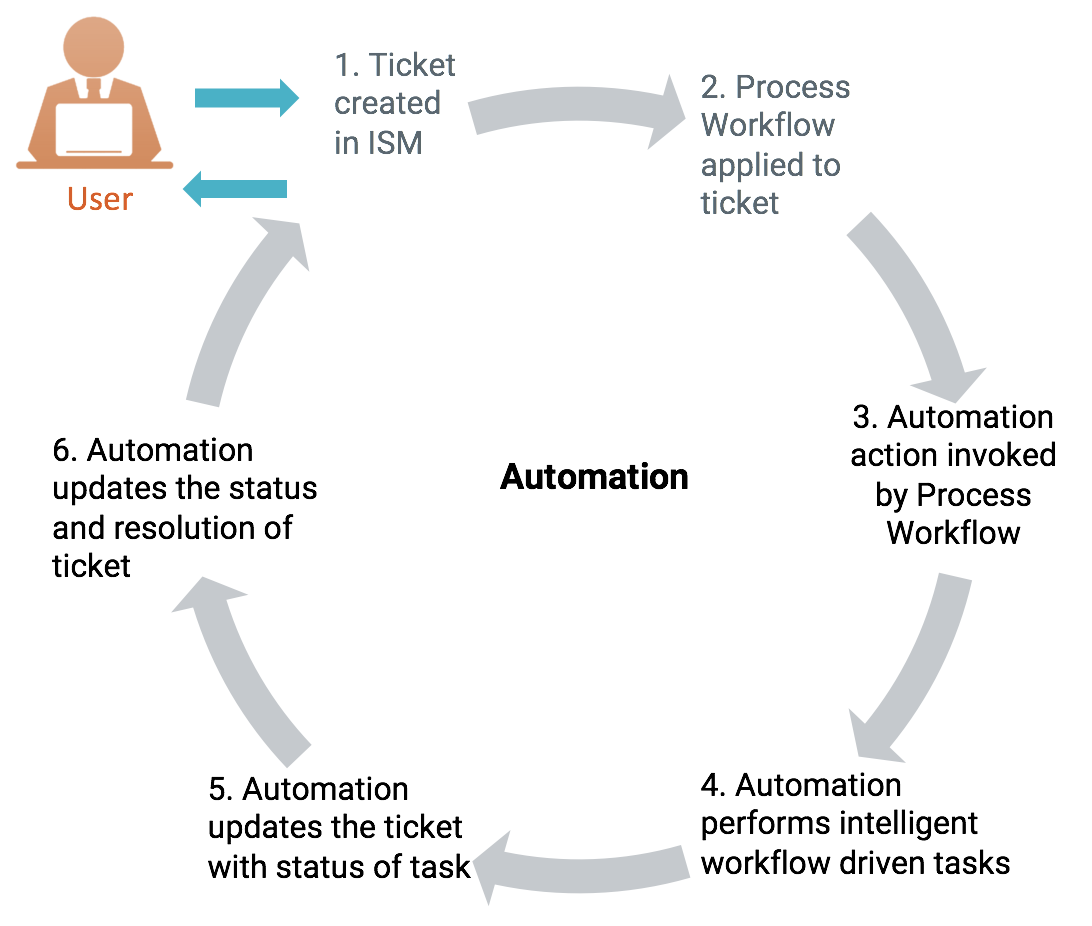Automation
What is Automation?
Automation allows you to automate tasks on remote services, servers, applications, and hardware. It removes the need to manually perform repetitive or rules-based tasks. It can streamline the way IT operates and shift tedious administration tasks away from people in order to allow them to focus on higher-value work. Since the automated processes are recorded, management can review these events to determine if there are areas where further improvement can and should be made. Not only does Automation save your organization a significant amount of money in terms of operating costs, but it also frees up service desk analysts to focus their efforts on more mission-critical tasks such as assisting customers on complex issues and customer satisfaction.
Benefits of Automation
Following are the benefits of automation:
- Automation of standardized processes
- Ensures consistency in Service Delivery
- Reduces the risk of human error
- Speeds up the execution and completion of processes
- Empowers the first line of support to perform more complex tasks
Systems that can be automated
Automation can automate tasks such as employee onboarding, manage user access rights, server management, and more. For example, you can use Directory and Mail Server operations provided out-of-the-box to set up network accounts and mailboxes for new employees. Some examples where Automation allows you to integrate with external systems is:
- Any system that allows Web Services (SOAP and REST)
- Any system accessible from a command line (Unix, SSH, and more)
- Provisioning virtual systems on any Cloud platform such as AWS, Azure, Google Cloud, and more
- File system SFTP
How Automation works
Following is a brief overview of how automation works:
- The workflow initiates when a Service Desk Analyst or an End User logs a Ticket from a Service Catalog which is tied to an Automation Workflow.
- Based on the parameters in the ticket, the appropriate ISM Process Workflow is applied to the ticket.
- The ISM Process Workflow internally calls an Automation Action (without an analyst interaction).
- This Automation action then executes the appropriate operations or tasks as defined within the Automation workflow.
- The Automation workflow is capable of updating the ISM Ticket with the status of the task that is, whether the task failed or completed successfully.
- Based on the status of the task, the Automation workflow updates the status and resolution of ISM Ticket. Notifications from the Ticket notify the user about fulfillment and/or status of Ticket.
Activate Automation add-on
Automation is an optional add-on and is a separate subscription from the rest of Intelligent Service Management licenses. Automation is licensed based on workflow executions.
To purchase a subscription, contact your Serviceaide account manager. The account manager can arrange to have the add-on activated for your organization's production and staging instances, generally within a few days.
You can send an email to info@serviceaide.com to request a trial.
Learn More
© 2019 Serviceaide 1-650-206-8988 http://www.serviceaide.com info@serviceaide.com
